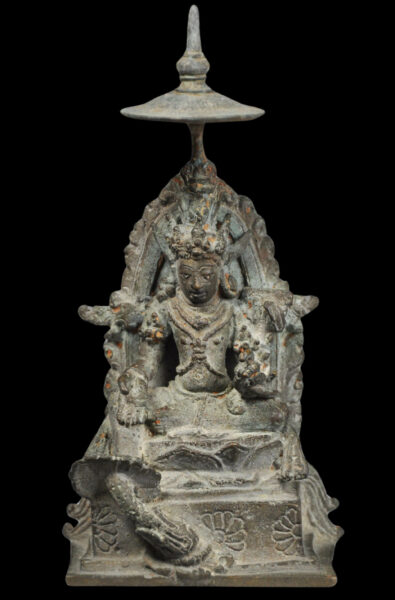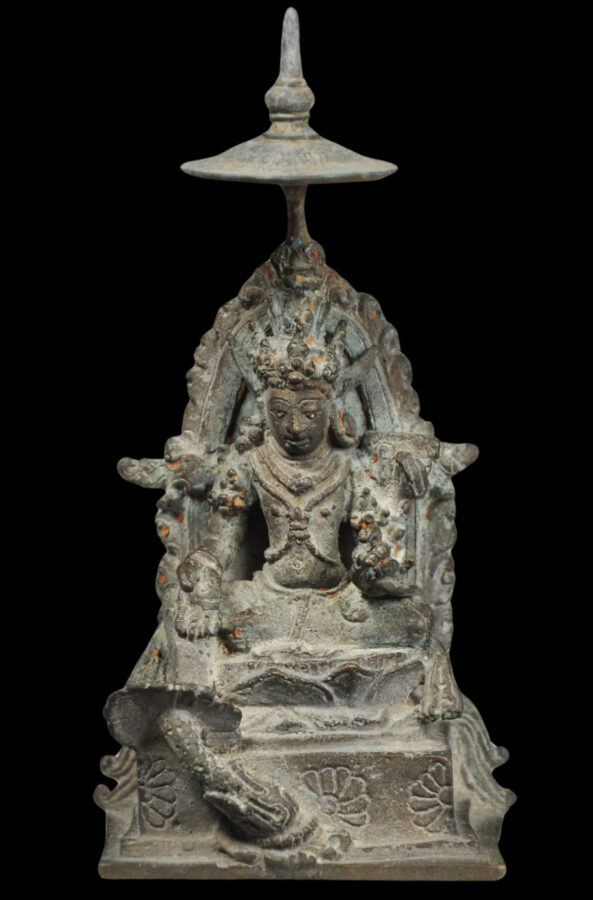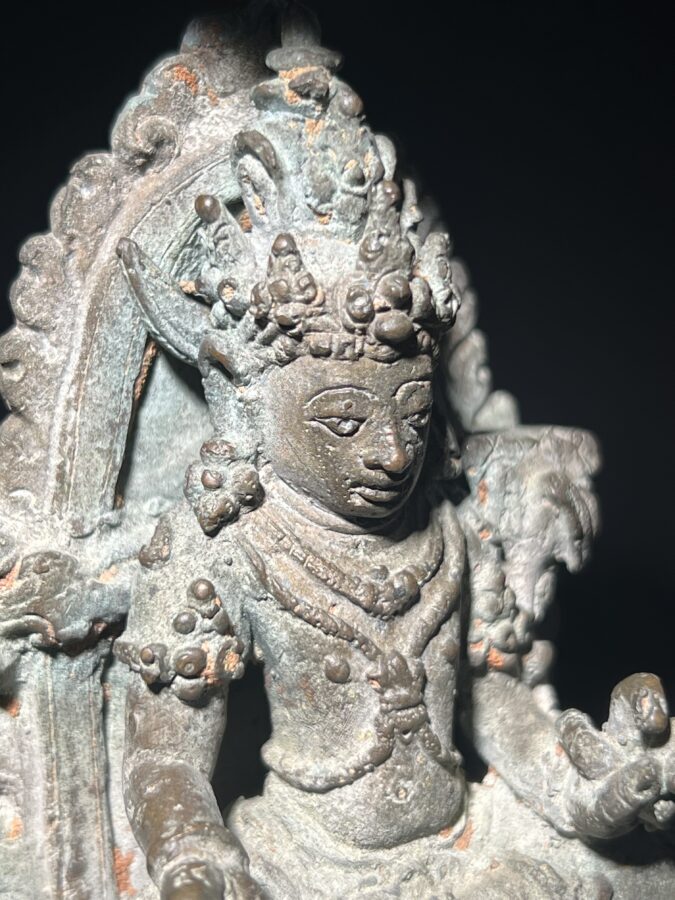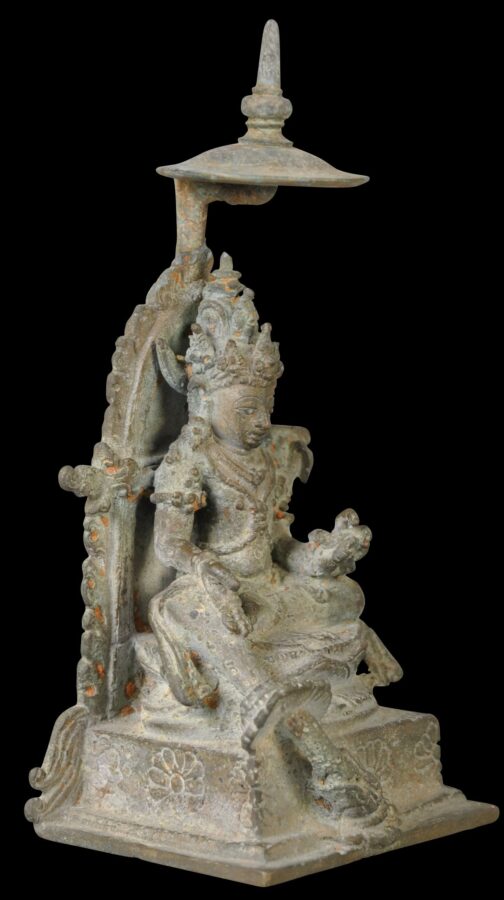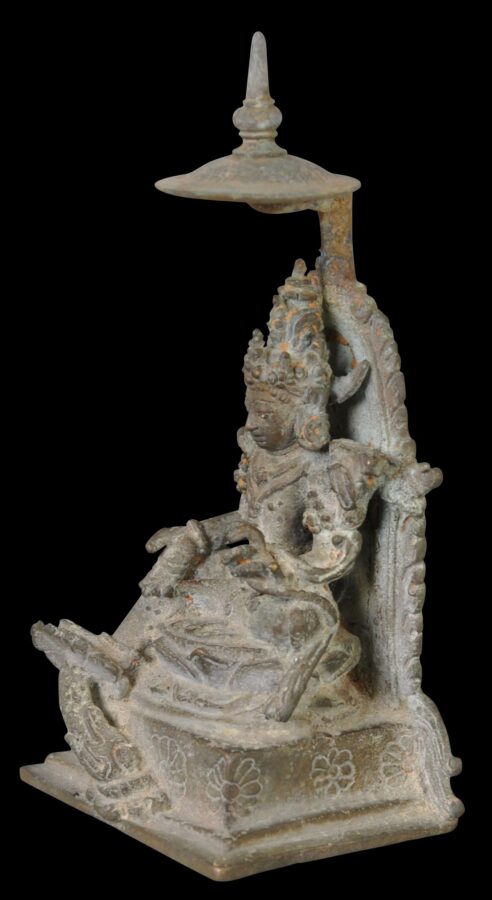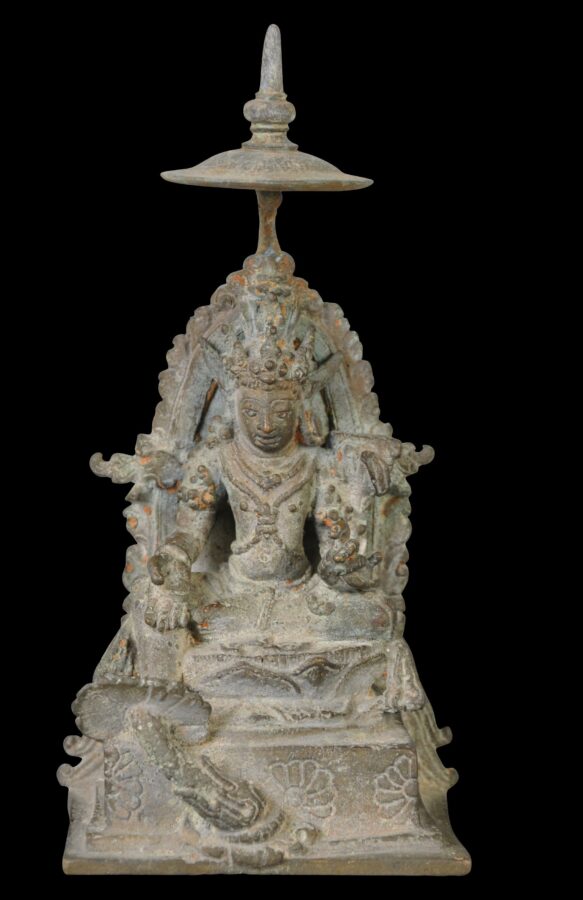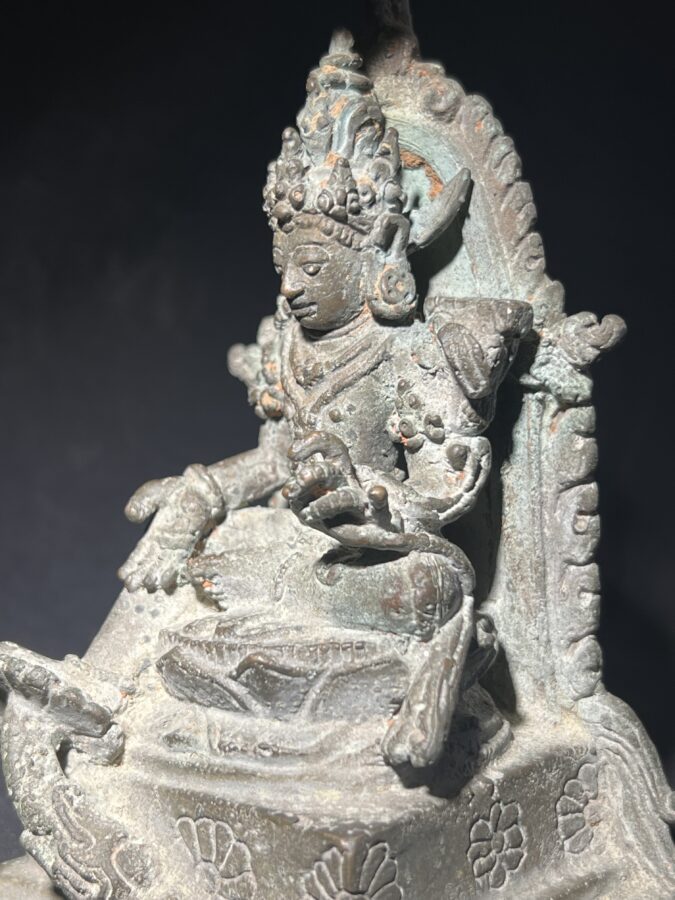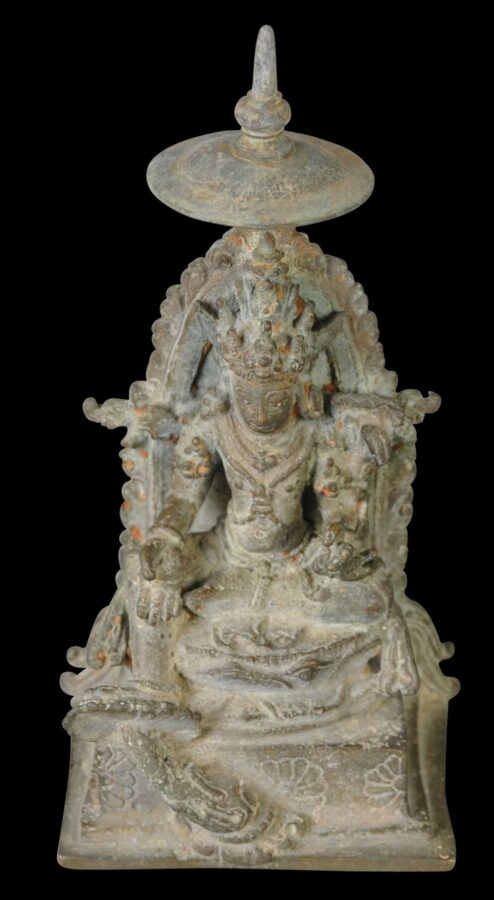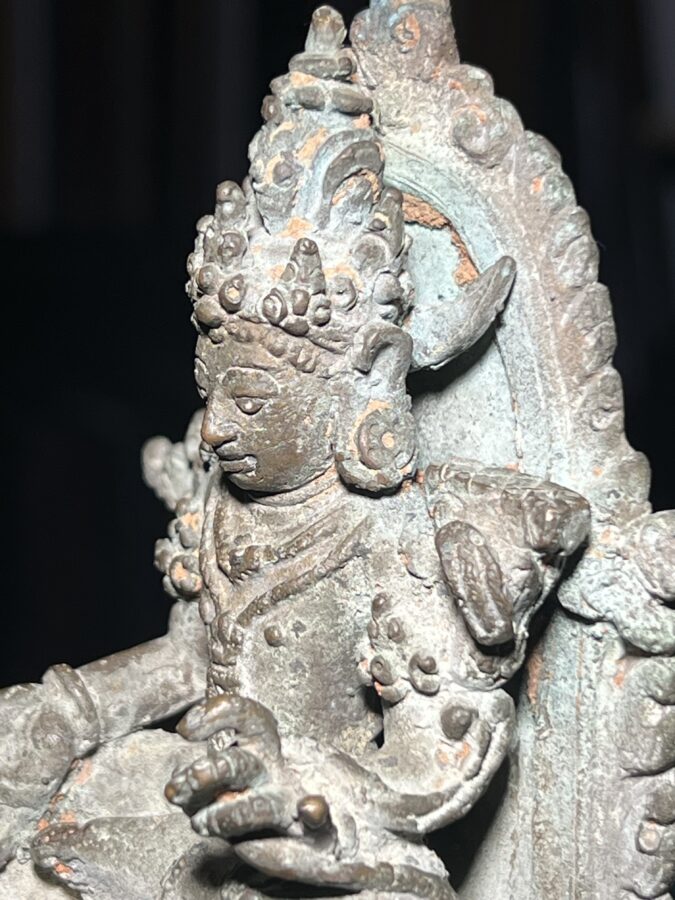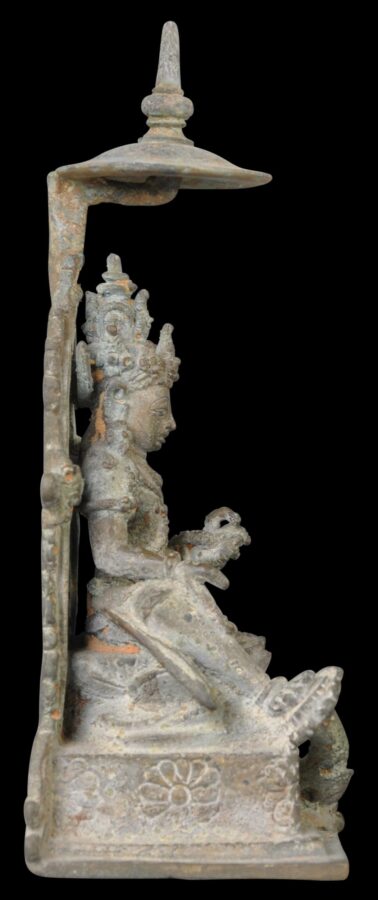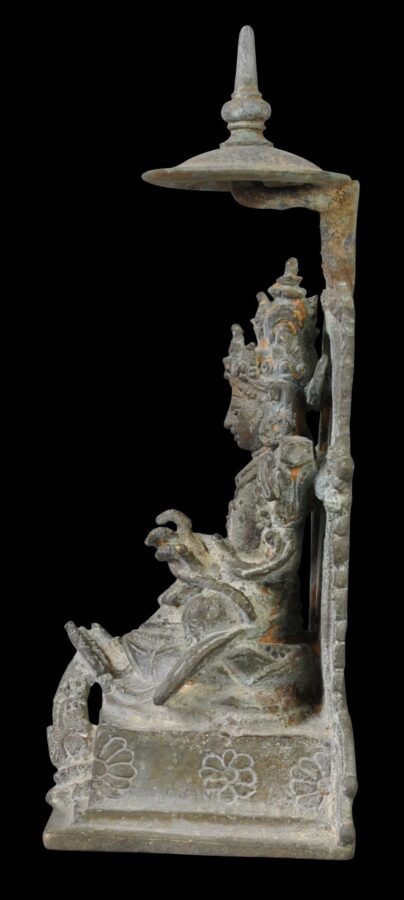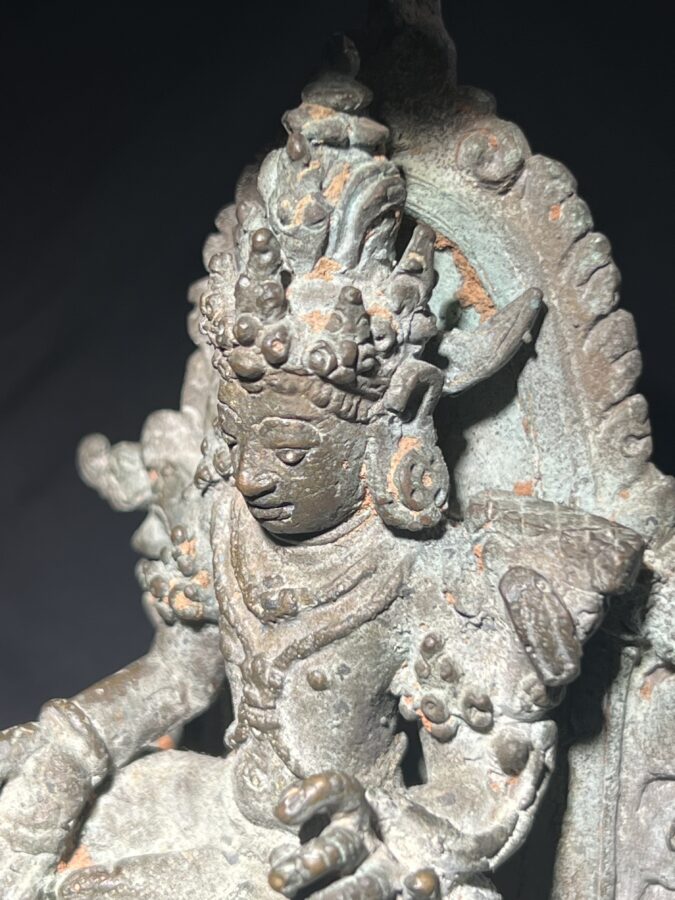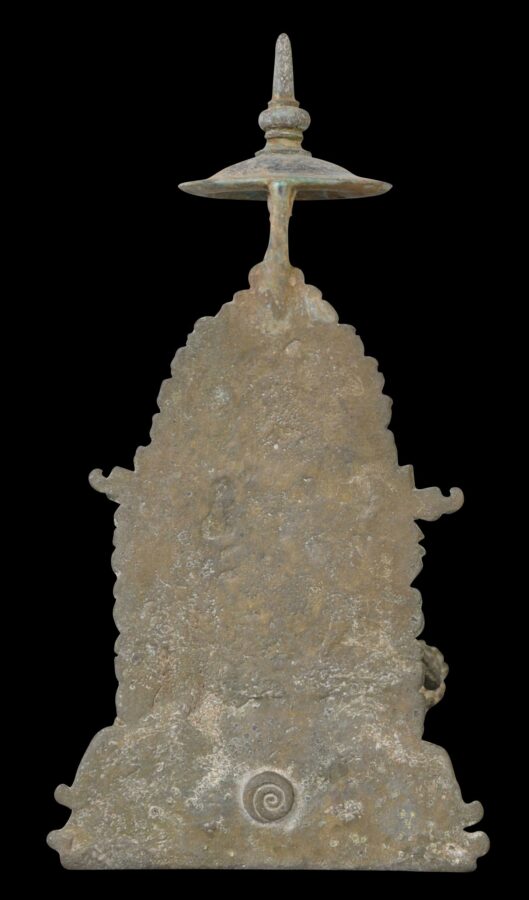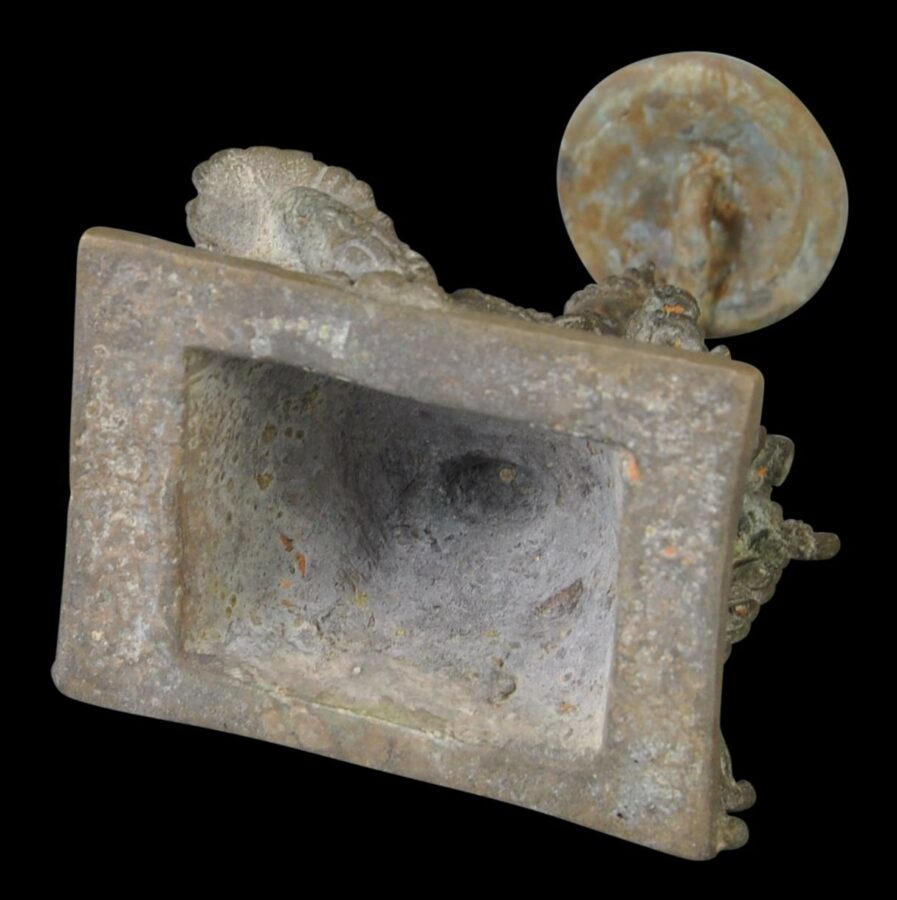The deity is seated in lalitasana with one leg hanging down and resting on a lotus and the other folded in front. The lotus stem emerges from what appears to be a makara’s mouth cast to the front of the base – this is a particularly Javanese element. The right hand is in the gesture of giving (varamudra). The left hand hold a stem which runs of the left arm and terminates with the bud of an uptala or blue lotus. The throne comprises a double-lotus cushion bordered by a row of pearls, atop a stepped, square base.
This type of throne and the arrangement of Manjusri on it is very much influenced by the Pala School of northern Indian art of the period, and will have been copied from missionary bronzes brought to Java at the time.
The backing plate or aureole is arched and has a flaming edge. At shoulder level on each side are highly stylised makara.
Manjusri is seated beneath an umbrella which has a spiky finial. This use of an umbrella, parasol or canopy to emphasise the figure’s divinity is very much a 9th-10th century device seen in central Javanese bronzes.
The facial features are clear and delicate; indeed, the faces of Javanese casting of this period tended to be finer than is the case with Pala bronzes. The eyes are clearly delineated and the nose is prominent and aquiline with even the nostrils shown clearly.
Manjusri does not wear a sacrificial cord across his chest, but instead wears a channavira which crosses over his chest. This type of cord is worn by goddesses and by gods when depicted as boys and young men (Lunsingh Scheurleer & Klokke, 1988, p. 82). The image’s wearing of a channavira is an identifying characteristic of Manjusri. The crescent behind the head and the complex arrangement of the hair also indicates youthfulness (van Lohuizen-de Leeuw, 1984, p. 56).
The sashes, girdles and other jewellery items are remnants of South Indian modes of adorning deities. This blending of northern Indian and southern Indian elements is characteristic of Javanese sculpture. The headdress is particularly complex.
The figure of Manjusri has been cast with space between the backplate and the deity’s back.
The base of the throne is engraved with flowers. The reverse is cast with a curious spiral motif.
The image has a varying green patina and the crevices retain small traces of soil. There are no losses.
Read our short essay about Srivijaya bronzes.
References
Fontein, J., et al, The Sculpture of Indonesia, National Gallery of Art, Washington, 1990.
van Lohuizen-de Leeuw, J.E., Indo-Javanese Metalwork, Linden-Museum Stuttgart, 1984.
Lunsingh Scheurleer, P., & M.J. Klokke, Ancient Indonesian Bronzes: A Catalogue of the Exhibition in the Rijksmuseum Amsterdam with a General Introduction, E.J. Brill, 1988.
Meulenbeld, B.C., et al, Budaya Indonesia: Arts and Crafts in Indonesia, Tropenmuseum, 1988.
Yahya, A., et al, Archipel: Indonesia – Kingdoms of the Sea, Snoeck, 2017.


